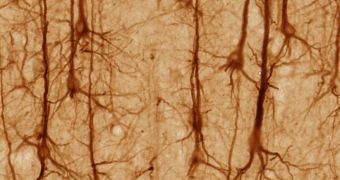Last year, it was demonstrated in monkeys that a single brain cell – called a neuron – can be in charge of storing a memory. While learning this was an achievement in and of itself, researchers wanted to push the envelope a bit further, and go deeper with their studies. In follow-up researches, it was revealed that individual neurons can be “attuned” to the concepts of cat and dog, also in monkeys, but the latest study topped them all. Scientists were able to demonstrate that nerve cells are capable of multitasking, but only when the situation demands them to do so, LiveScience reports.
In this sense, multitasking refers to neurons' ability to be involved in two mental processes at the same time. For example, during recent experiments, monkeys were made to watch both sedans and sports cars, and cats and dogs. The research team behind the investigation noticed that, though the general neural pathways involved in recognizing the differences between these objects were fairly different, there were some neurons which were actively involved in both, as in they were multitasking. Therefore, the experts concluded that the complexity of the cognitive task at hand dictates whether neurons take on extra functions, or if their roles remain clearly differentiated.
The research was conducted by scientists at the Massachusetts Institute of Technology (MIT) Picower Institute for Learning and Memory (PILM). The team, which included specialists Jason Cromer and Jefferson Roy, was led by MIT professor of neuroscience Earl K. Miller. The science group looked at the prefrontal cortex specifically, because this area is known to be involved in decision-making behavior, as well as in planning. “This ability to 'multitask' allows the brain to re-utilize the same pool of neurons for different tasks. Without it, storage capacity for critical thought might be severely limited,” Miller explains.
The group believes that additional research in this field could lead to important advancements in the field of medicine, such as for instance in studying neural disorders such as autism and schizophrenia. Both diseases share in common the fact that people they affect tend to be overwhelmed by individual stimuli. In healthy individuals, this is not the case, as stimuli that are deemed as unnecessary by the brain are usually ignored completely. One example, the MIT group concludes, is imagining what an autistic person feels, when asked to remember a dog. All images of all dogs he or she ever saw spring to mind at the same time, essentially overloading the neural networks.

 14 DAY TRIAL //
14 DAY TRIAL //